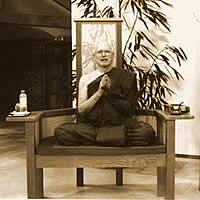A HANDFUL OF LEAVES
The Blessed One was once living at Kosambi in a wood of simsapa trees. He picked up a few leaves in his hand, and he asked the bhikkhus, ‘How do you conceive this, bhikkhus, which is more, the few leaves that I have picked up in my hand or those on the trees in the wood?
‘The leaves that the Blessed One has picked up in his hand are few, Lord; those in the wood are far more.’
‘So too, bhikkhus, the things that I have known by direct knowledge are more; the things that I have told you are only a few. Why have I not told them? Because they bring no benefit, no advancement in the Holy Life, and because they do not lead to dispassion, to fading, to ceasing, to stilling, to direct knowledge, to enlightenment, to Nibbana. That is why I have not told them. And what have I told you? This is suffering; this is the origin of suffering; this is the cessation of suffering; this is the way leading to the cessation of suffering. That is what I have told you. Why have I told it? Because it brings benefit, and advancement in the Holy Life, and because it leads to dispassion, to fading, to ceasing, to stilling, to direct knowledge, to enlightenment, to Nibbana. So bhikkhus, let your task be this: This is suffering; this is the origin of suffering; this is the cessation of suffering; this is the way leading to the cessation of suffering.’
[Samyutta Nikaya, LVI, 31]

Preface
This small booklet was compiled and edited from talks given by Venerable Ajahn Sumedho on the central teaching of the Buddha: that the unhappiness of humanity can be overcome through spiritual means. The teaching is conveyed through the Buddha’s Four Noble Truths, first expounded in 528 B.C. in the Deer Park at Saranath near Varanasi and kept alive in the Buddhist world ever since.
Venerable Ajahn Sumedho is a bhikkhu (mendicant monk) of the Theravada tradition of Buddhism. He was ordained in Thailand in 1966 and trained there for ten years. He is currently the Abbot of the Amaravati Buddhist Centre as well as teacher and spiritual guide to many bhikkhus, Buddhist nuns and lay people.
This booklet has been made available through the voluntary efforts of many people for the welfare of others.
Note on the Text:
The first exposition of the Four Noble Truths was a discourse (sutta) called Dhammacakkappavattana Sutta — literally, ‘the discourse that sets the vehicle of the teaching in motion’. Extracts from this are quoted at the beginning of each chapter describing the Four Truths. The reference quoted is to the sections in the books of the scriptures where this discourse can be found. However, the theme of the Four Noble Truths recurs many times, for example in the quotation that appears at the beginning of the Introduction.
THE FOUR NOBLE TRUTHS
Teachings by Ajahn Sumedho
– A Handful of Leaves
– Preface
– Introduction
– The First Noble Truth
– Suffering and Self-view
– Denial of Suffering
– Morality and compassion
– To Investigate Suffering
– Pleasure and Displeasure
– Insight in Situations
– The Second Noble Truth
– Three Kinds of Desire
– Grasping is Suffering
– Letting Go
– Accomplishment
– The Third Noble Truth
– The Truth of Impermanence
– Mortality and Cessation
– Allowing Things to Arise
– Realisation
– The Fourth Noble Truth
– Right Understanding
– Right Aspiration
– Speech/Action/Livelihood
– Effort/Mindfulness/Concentration
– Aspects of Meditation
– Rationality and Emotion
– Things As They Are
– Harmony
– 8-Path as Reflective Teaching
– Glossary
Source : www.dharmaweb.org

